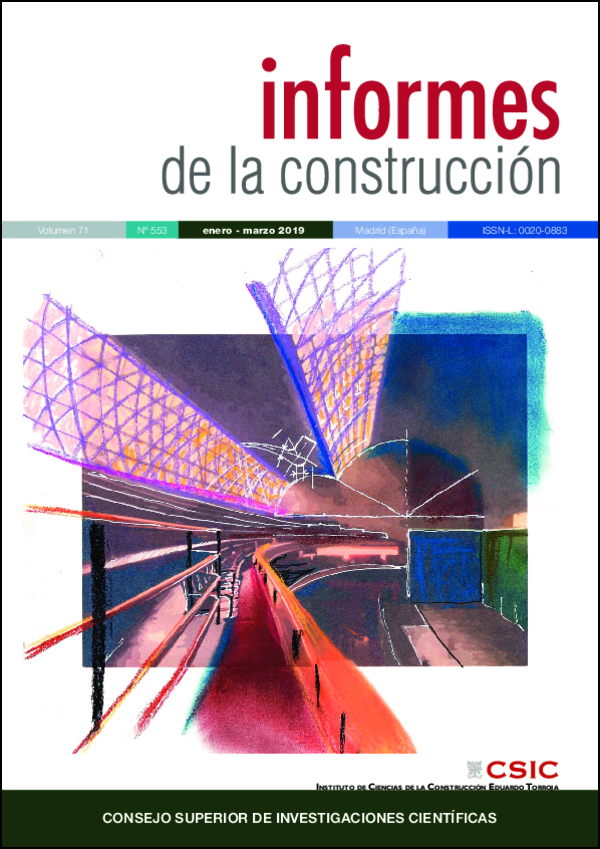Whatchtowers on the old Granada kingdom coast (XV-XVIII centuries)
DOI:
https://doi.org/10.3989/ic.67478Keywords:
Watchtowers, beacon towers, coast defense, Granada KingdomAbstract
Throughout our Mediterranean coasts, there is a continuing series of towers of different shapes located in small hills above the sea, separated from each other far enough to be seen and able to communicate with each other. They are watchtowers that detect the proximity of intrusive boats that arrive from Northern Africa with no pacific intentions. It is to these towers - historical, cultural and touristic heritage - that were built between the XV and XVIII centuries, that we dedicate this article in which, in a brief manner, their important defensive mission through time and also their organization, typology, the materials used for their construction and their maintenance are described.
Downloads
References
(1) Cebrián, J.A. (2009). “La aventura de la Reconquista. La Cruzada del Sur”. La Esfera de los libros. Editorial.
(2) Vera Delgado, A. (1986). “La última frontera medieval: La defensa costera en el Obispado de Málaga en tiempo de los Reyes Católicos”. Servicio de Publicaciones de la Excma. Diputación Provincial de Málaga.
(3) Gamir Sandoval, A. (1943). “Organización de la defensa de las costas del reino de Granda desde su reconquista hasta finales del siglo XVI”. Boletín de la Universidad de Granada.
(4) Bejarano Robles, F. (1971). “Documentos históricos de Benalmádena (1501.1512)”. Ayuntamiento de Benalmádena.
(5) Temboury Álvarez, J. (1975). “Torres almenaras (costa occidental)”. Instituto de Cultura. Excma. Diputación Provincial de Málaga.
Published
How to Cite
Issue
Section
License
Copyright (c) 2019 Consejo Superior de Investigaciones Científicas (CSIC)

This work is licensed under a Creative Commons Attribution 4.0 International License.
© CSIC. Manuscripts published in both the print and online versions of this journal are the property of the Consejo Superior de Investigaciones Científicas, and quoting this source is a requirement for any partial or full reproduction.
All contents of this electronic edition, except where otherwise noted, are distributed under a Creative Commons Attribution 4.0 International (CC BY 4.0) licence. You may read the basic information and the legal text of the licence. The indication of the CC BY 4.0 licence must be expressly stated in this way when necessary.
Self-archiving in repositories, personal webpages or similar, of any version other than the final version of the work produced by the publisher, is not allowed.















